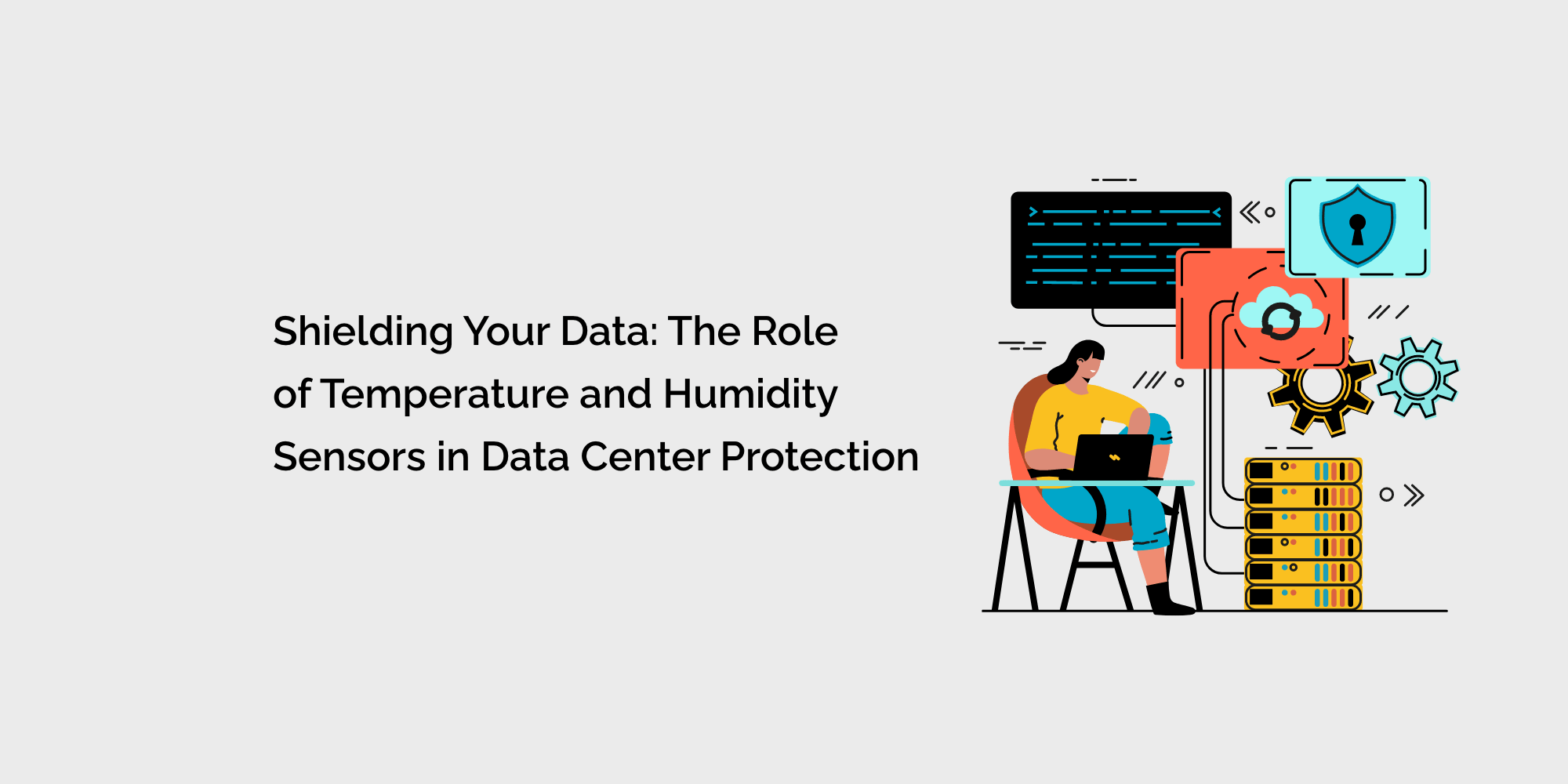In today's digital age, data is the lifeblood of businesses and organizations worldwide. The vast and sensitive information stored in data centers powers our online world. However, the smooth operation of data centers is critically dependent on maintaining optimal environmental conditions. This is where temperature and humidity sensors play a pivotal role. In this comprehensive guide, we will explore the indispensable role of these sensors in protecting your data center, ensuring its seamless operation, and safeguarding your invaluable digital assets.
The Critical Nature of Data Centers
Understanding the significance and vulnerability of data centers:
- Data Centers Unveiled: Defining data centers and their role in the digital landscape.
- Why Data Center Security Matters: Recognizing the importance of protecting digital assets.
- Environmental Threats: Identifying the dangers posed by temperature and humidity fluctuations.
Sensor Technology: The Silent Guardians
An in-depth exploration of the role of temperature and humidity sensors in data center protection:
- Sensors Demystified: Defining sensor technology and its applications in data centers.
- The Sensor Arsenal: Introduction to temperature and humidity sensors.
- How Sensors Work: Understanding the mechanics of sensor technology.
Maintaining Ideal Conditions
Exploring why temperature and humidity are mission-critical in data centers:
- The Impact of Temperature: How temperature affects equipment performance and lifespan.
- Humidity's Hidden Role: Why maintaining the right humidity level is crucial.
- The Goldilocks Zone: Defining ideal conditions for data center operations.
Sensor-Driven Climate Control
Learning how temperature and humidity sensors enable precise climate control:
- Automated Climate Regulation: How sensors trigger HVAC systems for real-time adjustments.
- Optimizing Energy Usage: Using sensors to enhance energy efficiency in data centers.
- Early Warning Systems: Preventing disasters through proactive climate management.
Data Center Disaster Avoidance
Understanding how sensor technology prevents costly data center failures:
- Overheating Dangers: How sensors avert overheating scenarios in server rooms.
- Humidity Hazards: Preventing equipment corrosion and electrical failures with humidity sensors.
- Fire Detection: The role of sensors in fire prevention and protection.
Real-time Monitoring and Alerts
Exploring the significance of real-time data and notifications:
- Data at Your Fingertips: How sensors provide continuous monitoring of environmental conditions.
- Immediate Alerts: The importance of timely notifications for disaster prevention.
- Remote Monitoring: Managing data center conditions from anywhere with mobile apps.
Setting Up Your Sensor Network
A step-by-step guide to implementing temperature and humidity sensors in your data center:
- Choosing the Right Sensors: Selecting sensors tailored to your data center's needs.
- Installation and Calibration: Proper placement and setup for accurate readings.
- Integration with HVAC Systems: Connecting sensors to climate control systems.
Fine-Tuning Your Data Center
Understanding how sensor technology allows for precision data center management:
- Customized Climate Control: Tailoring conditions to equipment and data storage needs.
- Proactive Equipment Care: Preventing hardware failures through data-driven decision-making.
- Data-Driven Efficiency: How sensor data contributes to optimizing data center operations.
Sustainability and Energy Efficiency
Exploring how sensor-driven practices lead to more eco-friendly data centers:
- Resource Conservation: How sensors contribute to reduced energy and water consumption.
- Reducing Carbon Footprint: Minimizing the environmental impact of data centers.
- Sustainable Data Center Practices: Strategies for responsible and eco-conscious data center management.
Success Stories in Data Center Protection
Real-life examples of data centers that have thrived with the integration of sensor-driven climate control:
- Mission-Critical Success: Stories of data centers that avoided disasters through sensor technology.
- Cost Savings: Instances where sensor-driven practices led to reduced expenses.
- Business Continuity: Experiences of organizations that safeguarded their digital assets with sensors.
The Future of Data Center Protection
Glimpsing into the future of data center management with sensor-driven technology:
- Advancements on the Horizon: How technology will continue to shape data center protection.
- Enhancing Data Security: The promise of more robust and secure data centers.
- Training Tomorrow's Guardians: Preparing the next generation of data center professionals for a sensor-driven future.
Conclusion
Temperature and humidity sensors are the unsung heroes of data center protection. In an increasingly digital world, the importance of safeguarding your data center cannot be overstated. With sensor technology, you can ensure that your data center operates seamlessly, your digital assets remain secure, and your business thrives in the face of environmental challenges. Your data center is not just a repository of information; it's a testament to the fusion of technology and vigilant guardianship. As you embrace sensor technology, you'll find that your data center is not just a room full of servers but a mission-critical hub that underpins your organization's success.








